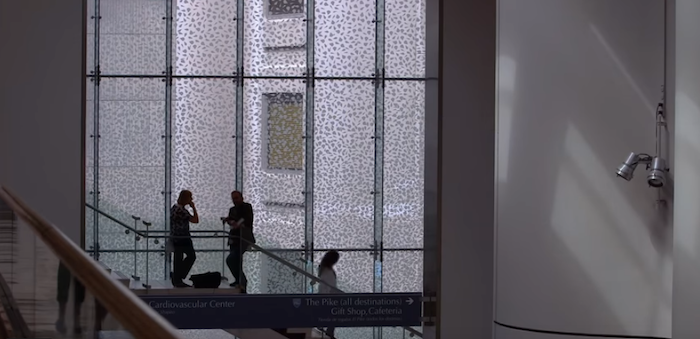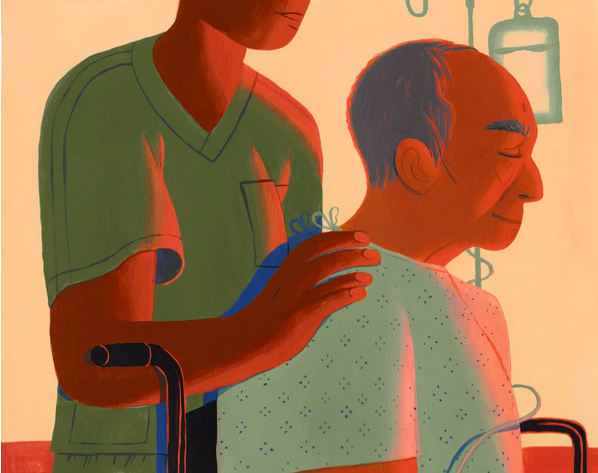They’re changing how we approach end-of-life care.
by Kristen Fischer
To many people, the word “doula” refers to a childbirth coach. But doulas aren’t only available for when life begins — they can help when life ends too.
An end-of-life doula is a nonmedical professional trained to care for a terminally ill person’s physical, emotional, and spiritual needs during the death process. While you may never have heard of this position in the healthcare field, there’s quite a market for “death doulas.”
The role is also referred to as an “end-of-life coach,” “soul midwife,” “death midwife,” or “transition guide.”
Searching for a way for patients to have a “good death” has become increasingly important in the medical community. Last year the medical journal Behavioral Sciences devoted an entire issue to communication over end-of-life issues to ensure patients’ end-of-life wishes were realized.
“In the American culture, where the majority of people die in hospitals, death has been routinely denied, sterilized, and/or removed from view,” said Maureen P. KeeleyTrusted Source. Keeley, who is director of graduate studies at the Department of Communication Studies, Texas State University, wrote in the journalTrusted Source. “Talking about dying with the person that is terminally ill can relieve anxiety for both participants in the conversation, and it can help ensure that final wishes regarding treatment at the end of life are honored.”
Currently there a few organizations that administer credentials for death doulas, including the International End of LifeDoula Association (INELDA), International Doulagivers Institute, and Lifespan Doula Association (LDA).
Jeri Glatter, vice president of INELDA, said her organization has trained about 900 end-of-life doulas in the United States since 2015. The organization provides personal certifications as well as training to hospital staff members including hospice workers. In addition to popularity in the United States, there is a significant interest for training in Asia.
Individuals who seek a personal certification often go on to run their own businesses. An INELDA certification involves attending a training session and then applying for the credential. Several requirements, including hands-on work, must be completed to become certified, which takes the average person six to nine months and is quite rigorous, Glatter said.
Life as a death “doula”
For those who embark on the career, it’s quite a personal choice.
Kelly Sanders, RN, an end-of-life doula from Michigan, worked as a nurse in the long-term care field for many years before becoming a death doula.
“I saw people die without any control over the process,” she recalled. “It seemed as soon as the terminal diagnosis came, the patient became invisible to family and friends. They would talk as if the patient was already gone, even while the patient was in the room.”
She said that hospice cannot provide all of the services a person needs — especially the emotional help — when they have a terminal prognosis.
“Hospice does a great job taking care of the medical aspect of dying, but due to the changing nature of healthcare compensation, little time was left for the other aspects of dying that are just as important for a peaceful passing,” she said. “End-of-life doula services fit that need.”
She said there is a big misconception that hospice provides the same services as a death doula.
“I think it was the overall idea of hospice, but because of Medicare/Medicaid cuts, hospice only has time to deal with the medical needs. They do not have the training to even do the work of a doula.”
Death doulas can fill a gap in care. People can work with a death doula before they reach a point where they qualify for hospice. And an end-of-life doula is able to devote themselves to a single person, going in without an agenda to fulfill that person’s needs.
What a doula does
Sanders said a huge part of the job is to establish trust and build a relationship with patients and their families. It’s important to respect their wishes and not influence their decisions, she said.
As part of her services for Peaceful Journey Home, LLC, Sanders is often asked to take family photos or assist patients in writing letters to ask for forgiveness. Some patients hire her to plan their funerals.
“The more time that you have with a person, the more you learn and it is easier to learn their life story and advocate for their wishes,” she said. Sanders said it’s important to be flexible during the process. When she notes a patient’s wishes and they change, she gently reminds them of their initial preferences but allows them to change their minds.
“It is their death, so they can certainly have the right to change focus,” she said. “Sometimes we don’t always know what we want, and we mold the idea as we go along.”
Some family members rely on the doula to remain present and keep them informed on the patient’s status while they take a much-needed break.
A death doula can also answer questions about the dying process and empower family members to create the kind of environment that the person dying has requested, said Christy Marek, an end-of-life doula from Minnesota who sees patients locally and offers her services via phone and video conference.
“We help family feel competent and central to the process and less afraid of the unknown,” Marek said. “It is a true partnership, and I think that’s the best support we offer for families — assuring them they are not alone.”
Typical services include helping patients create legacy projects or planning a person’s final days and moments. Mostly, Marek said she focuses on creating a safe space for clients to do the emotional and “soul” work needed to help them prepare for their death.
“I help the individual who is dying to stay close to what is most important in the time that remains, to focus on what is possible rather than on limitation, and to support their loved ones in staying as involved as desired as things progress,” Marek said.
One of the biggest advantages of having an end-of-life doula is the continuity of care and consistent support. Patients often transition from actively seeking curative treatment to no longer receiving treatment. Some are put in hospice, and some “graduate” from hospice before their death, Marek explained.
“These are all circumstances where care teams change and support systems get disrupted and lost. Having an end-of-life doula throughout the process of end of life ensures that there is a consistent supportive foundation that remains the same,” Marek said.
Family ties can help lead to a ‘good death’
Sanders said it is best when family members are actively involved with the doula to respect the patient’s wishes.
“I try to encourage and engage families to participate in the process, especially if they are not in agreement with the process,” she said. “All input is valuable, but I like to politely remind families that this is not their death. So, the dying person’s wishes and needs come first.”
“Many times, a patient is not able to articulate their wishes, such as cases of dementia, but the patient still deserves a lasting tribute,” Sanders said.
Marek said her goal is to serve the patient even if they forget they hired her, don’t remember what they initially asked for, or have different wishes than family members.
She said her ultimate goal is to get what the patient wants — even if she is hired by family members.
Aside from bedside manner, death doulas have to run their business. Their services might be too costly for some patients, and insurance is unlikely to cover their work.
Sanders said an individual package may cover 20 hours for $700 plus an additional fee if the patient wants more time with the doula.
Marek said that prices typically are flexible and can include a weekly or monthly retainer or individual sessions and packages. An end-of-life vigil, which takes place during the active dying process, can range from $1,500 to $3,500 or so.
Leaning ‘into’ the fear
Anyone who is struggling with their diagnosis or wants to leave something behind for family, may want to seek out a death doula.
Sanders loves her job but admits that it’s hard when a patient passes away. “That part never gets easy,” she said. “I take comfort that I was able to help them transition on their terms.”
“Our culture holds so much fear around death that when we find ourselves face-to-face with it, either our own mortality or that of someone we love, we typically don’t know what to do,” Marek added. “It’s incredibly scary to face into the unknown, so most of us do our best not to.”
But Marek said ignoring real life can be harmful.
“It affects not only the person who is dying, but the entire circle that surrounds them,” Marek said.
The presence of an end-of-life doula helps people “lean into” the pain and fear of the unknown. That frees up space and energy so they can experience the emotions including actual joys that come with death. She said the doula’s experience helping others through death can ease the process for both family and patient.
“The comforting presence of a doula enables opportunities for the dying to connect more deeply with loved ones and to enjoy the time that remains, focusing on possibility rather than only on limitation, on what they can control rather than on what they can’t,” Marek said.
She said she believes that many people would benefit from having an end-of-life doula because they can help foster connections even during an emotionally painful time.
“I believe a death doula — the openhearted presence of someone who won’t turn away in the face of suffering and will offer support to help us work with it rather than fight against it — would benefit everyone at end of life.”
Complete Article ↪HERE↩!

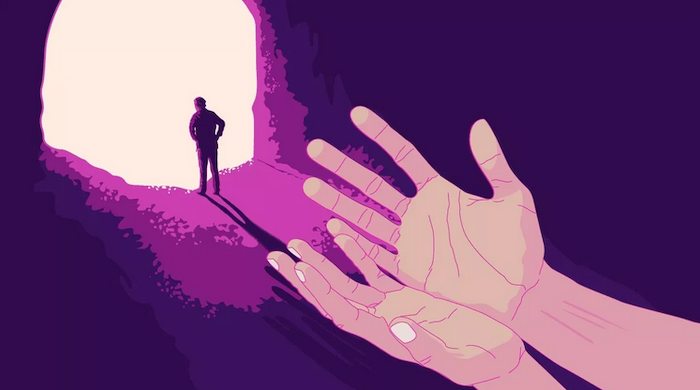
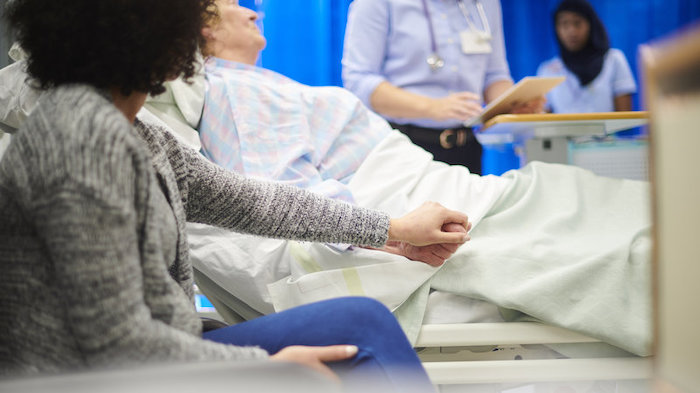
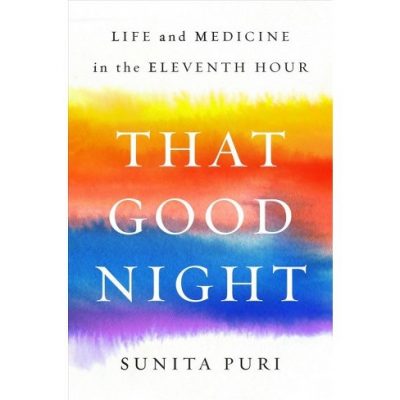 What other advantages does palliative care offer?
What other advantages does palliative care offer?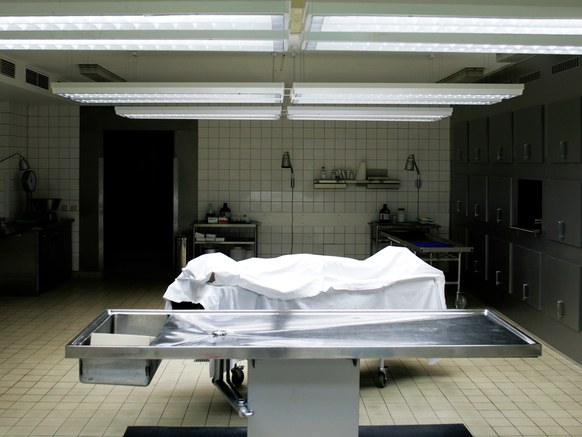 By Gary Rotstein
By Gary Rotstein